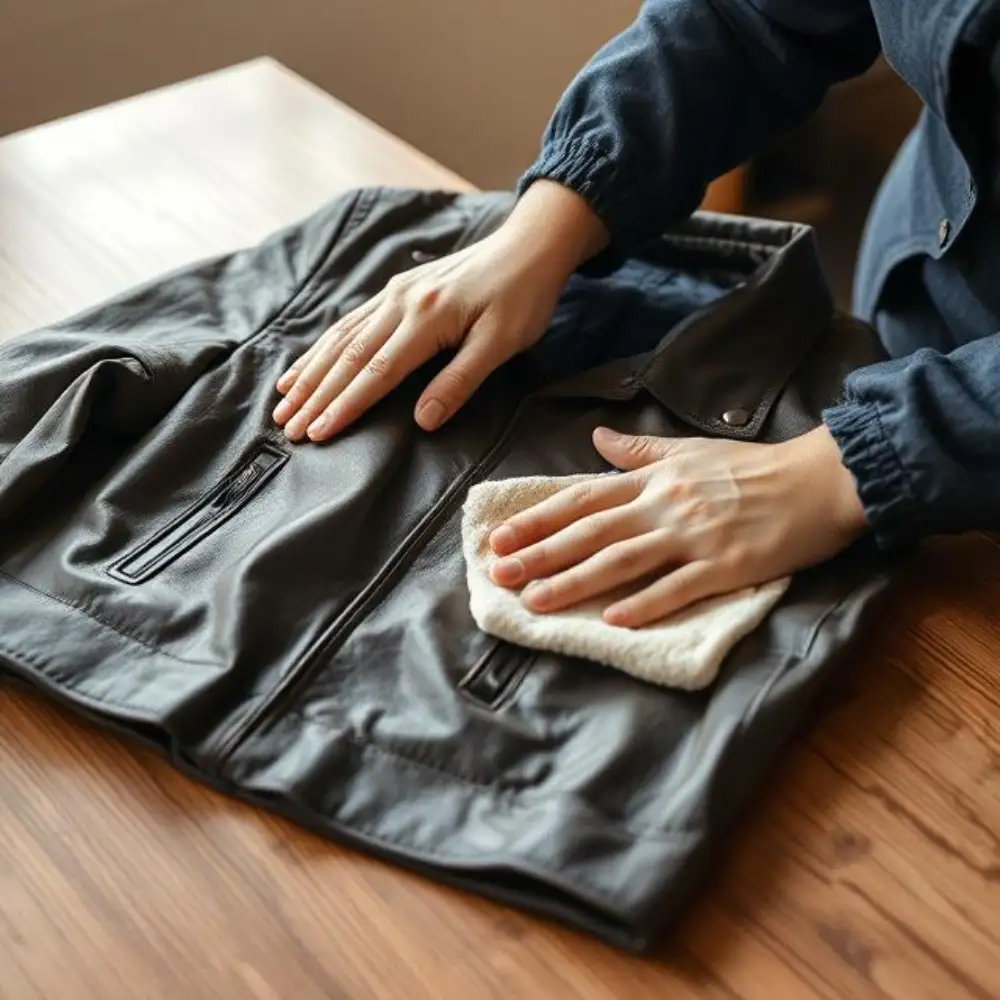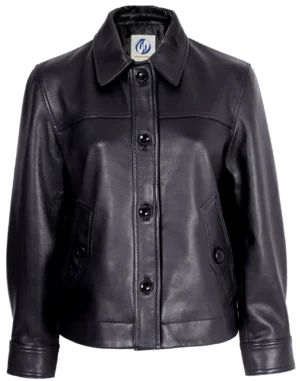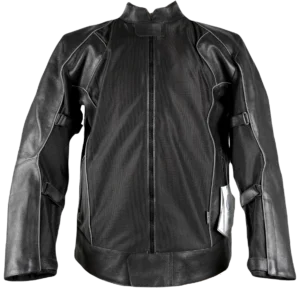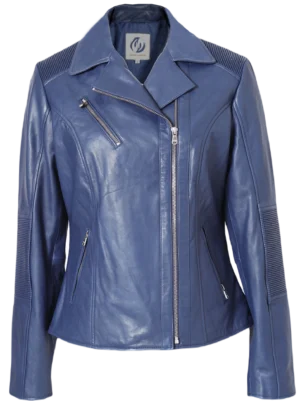A quality leather jacket represents more than just a fashion statement—it’s an investment that, with proper care, can last for decades and even be appreciated in character. Understanding how to maintain a leather jacket is crucial to preserving its appearance, preventing damage, and extending its lifespan. This comprehensive guide covers everything from routine maintenance to specialized treatments for different leather types.
Understanding Your Leather
Before diving into care techniques, it’s important to identify what type of leather your jacket is made from, as different varieties require specific treatment approaches:
Full-grain leather: The highest quality and most durable leather, featuring natural markings and a distinctive leather patina that develops over time. Full-grain requires minimal but consistent care.
Top-grain leather: Slightly processed to remove imperfections, this leather is thinner and more pliable than full-grain but still high quality, requiring regular conditioning.
Corrected-grain leather: Sanded to remove imperfections and embossed with an artificial grain pattern. This type needs more protection against moisture and wear.
Nubuck: Buffed to create a velvet-like surface, similar to suede but more durable. Requires specialized cleaning and is more vulnerable to staining.
Suede: Features a napped finish susceptible to water damage and staining. Demands careful, specialized cleaning.
Essential Routine Maintenance
1. Regular Dusting and Surface Cleaning
- Frequency: Every 1-2 weeks of regular wear
- Technique: Gently wipe your jacket with a soft, dry cloth (microfiber is ideal) to remove dust, dirt, and body oils that can degrade leather over time
- Focus areas: Pay special attention to the collar, cuffs, and front panels that experience the most contact with skin and environmental elements
2. Proper Storage
- Hanging: Use a wide, padded hanger to maintain your jacket’s shape—never wire hangers, which can distort the shoulders.
- Cover: If storing long-term, use a breathable cotton garment bag rather than plastic, which can trap moisture and lead to mildew
- Location: Store in a cool, dry environment away from direct sunlight, which can fade and dry out leather
- Spacing: Allow adequate space between garments to prevent creasing and ensure air circulation
3. Conditioning
- Frequency: Every 3-6 months, depending on wear frequency and climate conditions
- Products: Use a high-quality leather conditioner or cleaner appropriate for your specific leather type
- Application: Apply a small amount of leather jacket conditioner with a soft cloth using circular motions, focusing on areas that seem dry or stiff
- Absorption time: Allow the conditioner to be absorbed for several hours or overnight before wearing
- Testing: Always test any new product on an inconspicuous area first
Addressing Common Issues
Handling Water Exposure
- If your leather jacket gets wet, allow it to dry naturally at room temperature—never use direct heat from radiators, hair dryers, or sunlight.
- While drying, periodically reshape the jacket to prevent deformation.
- Once completely dry, apply an appropriate conditioner for leather jacket to restore moisture to the leather
- For future protection, consider applying a high-quality leather waterproofing product (avoiding silicone-based options, which can damage leather over time)
How to Remove Stains from Leather Jacket
Oil-based stains:
- Blot (don’t rub) excess oil immediately with a clean, absorbent cloth
- Apply a small amount of cornstarch or talcum powder to draw out the oil
- Let it sit for several hours or overnight, then brush away
- For persistent stains, consult a leather specialist
Water-based stains:
- Allow to dry completely
- For minor stains, a very slightly dampened cloth with mild leather soap may help
- For severe stains, seek professional cleaning
Ink stains:
- These are among the most difficult to remove—act quickly
- A small amount of isopropyl alcohol on a cotton swab may work on certain leathers
- Ink stain is high-risk—test in an inconspicuous area first
- Seek Professional Assistance
Leather Crack Repair and Prevention
- Prevention: Regular conditioning is the best defense against cracking
- Minor cracks: Can be treated with leather conditioner with natural oils like mink or neatsfoot
- Significant cracks: May require professional repair with specialized leather fillers and color-matching
Specialized Care for Different Leather Types
Suede and Nubuck
- Use a specialized suede brush to maintain the nap
- Never use liquid cleaners or conditioners designed for smooth leather
- Use a suede-specific protector spray
- For stains, try a suede eraser before attempting any liquid treatments
- Professional cleaning is often the safest option
Patent Leather
- Clean with a damp cloth and mild soap if necessary
- Specific patent leather polishes can restore shine
- Never use standard leather conditioners
- Store with tissue paper between folds to prevent sticking
Aged or Vintage Leather
- Requires more frequent but lighter conditioning
- May benefit from specialized restoration products
- Clean with extra gentleness, as the leather may be more fragile
- Consider consulting a leather conservation specialist for valuable pieces
Professional Leather Jacket Cleaning
When to Seek Professional Help
- Deep, set-in stains
- Significant structural damage or tears
- Color restoration
- Lining repairs
- Vintage or particularly valuable jackets
- Mold or mildew issues
What to Look for in a Leather Specialist
- Experience specifically with garment leather (not just shoes or upholstery)
- References or portfolio of previous work
- Understanding of different leather types and finishes
- Clear explanation of the processes and products they’ll use
Seasonal Considerations
Pre-Storage Routine (End of Winter)
- Clean thoroughly to remove all accumulated dirt and oils
- Condition well before storing for extended periods
- Address any minor issues before they worsen during storage
- Use cedar products nearby (not directly on leather) to deter moths
- Check periodically during the off-season
Fall Preparation (Before Regular Wear)
- Light cleaning and inspection for any summer storage issues
- Conditioning if the leather appears dry
- Consider applying a protective treatment if appropriate for your leather type
- Check all hardware (zippers, snaps) and address any problems
Environmental Considerations
- Humid environments: May require more frequent cleaning but less conditioning; be vigilant about mold
- Dry climates: Will demand more regular conditioning to prevent cracking
- Cold regions: Allow leather to warm to room temperature before handling if it’s been in extreme cold
- Seaside locations: Salt air can be particularly damaging, so take more frequent care.
Conclusion
A well-maintained full-grain leather jacket isn’t just a garment; it’s a companion that ages with you, developing character and a unique patina that tells your shared story. The time invested in proper care preserves your financial investment and enhances your jacket’s aesthetic and emotional value. While it may seem demanding, proper leather care eventually becomes a satisfying ritual connecting you to a tradition of craftsmanship and materials valued for centuries.
Remember that each leather jacket is unique, with its own characteristics and needs. By understanding your specific jacket and developing a consistent care routine, you’re not just maintaining a piece of clothing but preserving a potential heirloom.







